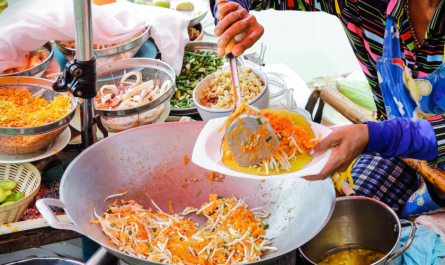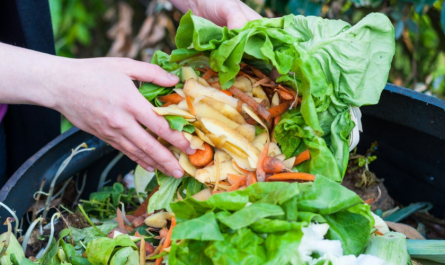Hosting a farm-to-table dinner party is the perfect way to showcase fresh, seasonal ingredients while supporting local farmers and creating an unforgettable dining experience for your guests. By using ingredients sourced directly from nearby farms or your own garden, you can craft a menu that celebrates sustainability, highlights natural flavours, and connects people to the origins of their food. Here’s a step-by-step guide to planning, preparing, and presenting a farm-to-table feast that will leave a lasting impression.
Step 1: Plan Your Menu Around Seasonal Ingredients
The essence of a farm-to-table meal is in its fresh, seasonal ingredients. Research what’s in season locally, and design your menu around these items. Many farms, farmers’ markets, and local suppliers can provide a list of what’s currently available, helping you align your dishes with the freshest produce.
- Spring: Asparagus, peas, radishes, strawberries, and leafy greens
- Summer: Tomatoes, zucchini, cucumbers, sweet corn, berries, and fresh herbs
- Fall: Squash, apples, root vegetables, Brussels sprouts, and pumpkins
- Winter: Kale, potatoes, beetroots, carrots, and hardy greens
Pro Tip: If possible, visit your local farmers’ market for inspiration and pick up any items that spark ideas for your courses.
Step 2: Source Ingredients from Local Farms or Markets
Sourcing directly from local farms not only ensures freshness but also supports sustainable agriculture. Try to get as many ingredients as possible from nearby sources, including vegetables, fruits, meats, dairy, and even artisan products like bread and honey.
- Find Local Farms: Many farms offer direct sales or partnerships with community-supported agriculture (CSA) programmes, where you can purchase a variety of produce.
- Farmers’ Markets: Farmers’ markets are a convenient way to access multiple local suppliers in one location, perfect for sourcing unique and seasonal ingredients.
Step 3: Create a Farmhouse-Inspired Tablescape
A farm-to-table dinner party is not just about the food—it’s also about creating a welcoming, natural ambience. Opt for a rustic farmhouse-inspired tablescape to enhance the experience. Use simple, natural elements to make the space feel warm and inviting.
- Table Decor: Use burlap table runners, linen napkins, and mason jar centrepieces filled with wildflowers or herbs.
- Dinnerware: Mismatched or handmade plates, wood serving boards, and pottery bring a rustic feel to the table.
- Lighting: For an evening event, use candles or string lights to create a cosy atmosphere.
Pro Tip: Use seasonal elements like small pumpkins in the fall, sprigs of rosemary in winter, or citrous and greenery in summer as decor accents.
Step 4: Craft a Fresh and Simple Menu
A farm-to-table menu should showcase the natural flavours of each ingredient without overcomplicating the dishes. Here are some ideas for a four-course meal that highlights fresh, seasonal produce.
- Appetiser: A farm-fresh vegetable crudité with herb-infused dip or a rustic bruschetta with seasonal tomatoes and basil.
- Salad Course: A seasonal salad with mixed greens, fresh herbs, nuts, and a homemade vinaigrette.
- Main Course: Roasted vegetables with locally sourced protein like grilled chicken, seared steak, or a vegetarian dish featuring hearty grains.
- Dessert: Seasonal fruit crisp or cobbler, or a simple yoghurt parfait with honey and fresh berries.
Pro Tip: Use fresh herbs in your dishes for added aroma and flavour that complements farm-fresh produce.
Step 5: Incorporate Farm-to-Table Drinks
Don’t forget to bring the farm-to-table concept to your drink selection. Look for locally made wines, craft beers, or ciders, or make cocktails using fresh ingredients like herbs and fruits. Some ideas include:
- Herb-Infused Cocktails: Try a basil gin and tonic or rosemary-spiked lemonade.
- Local Wine or Cider: Ask a nearby vineyard or cider maker for recommendations.
- Non-Alcoholic Options: Freshly squeezed juices or a mix of sparkling water with muddled berries and herbs.
Pro Tip: Create a drink station with pitchers of infused water, such as cucumber mint or lemon thyme, for a refreshing and hydrating option.
Step 6: Host a Farm-to-Table Cooking Demonstration (Optional)
To make your dinner party interactive, consider incorporating a small cooking demonstration where you prepare one of the dishes in front of your guests. It could be as simple as putting together a fresh salad or demonstrating how to make an herb-infused dressing. This adds a personal touch and makes guests feel more connected to the food.
Step 7: Set the Scene with Soft Background Music
For a relaxed and comfortable environment, play soft background music that complements the rustic, down-to-earth vibe of a farm-to-table dinner. Acoustic folk, jazz, or even a playlist inspired by nature sounds can create the perfect atmosphere.
Step 8: Share the Story Behind Each Dish
One of the best parts of a farm-to-table meal is knowing where the food comes from. Share the story behind each ingredient, especially if you sourced something unique or directly from a local farm. This could include details on the farm, the growing process, or even personal anecdotes from your trip to the farmers’ market. Guests will appreciate the care and thoughtfulness that went into every detail.
Conclusion
Hosting a farm-to-table dinner party is a meaningful way to enjoy fresh, seasonal flavours and connect with local producers. With thoughtful planning, a rustic atmosphere, and simple yet delicious dishes, you can create a dining experience that’s memorable and sustainable. So gather your friends, source some fresh ingredients, and celebrate the beauty of a farm-to-table feast right at home.







